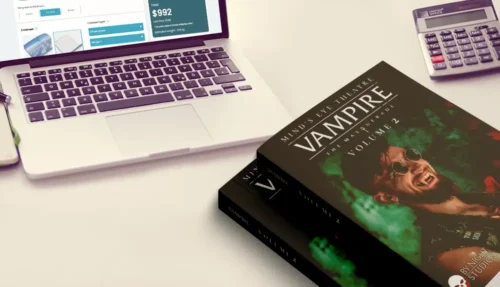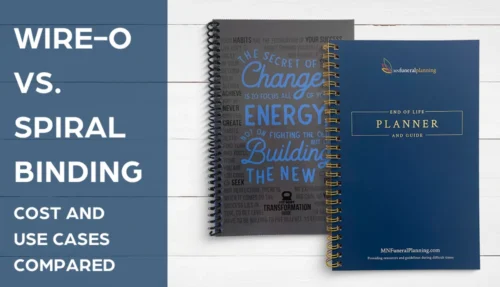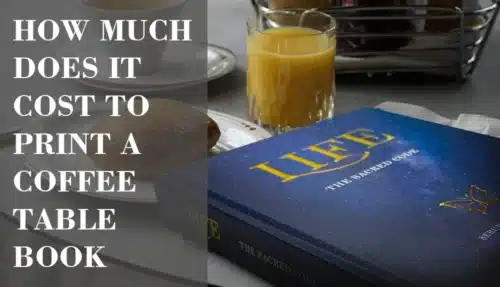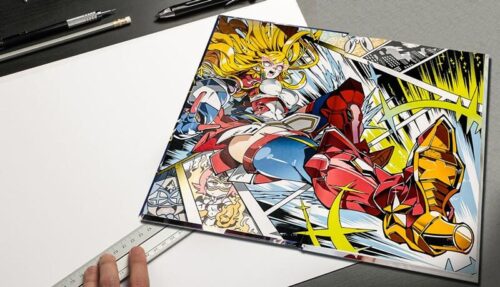Whether as a hobby, to preserve tradition, or a self-publishing business idea, few personal book projects have the same mouth-watering appeal as the traditional family cookbook — made easy!
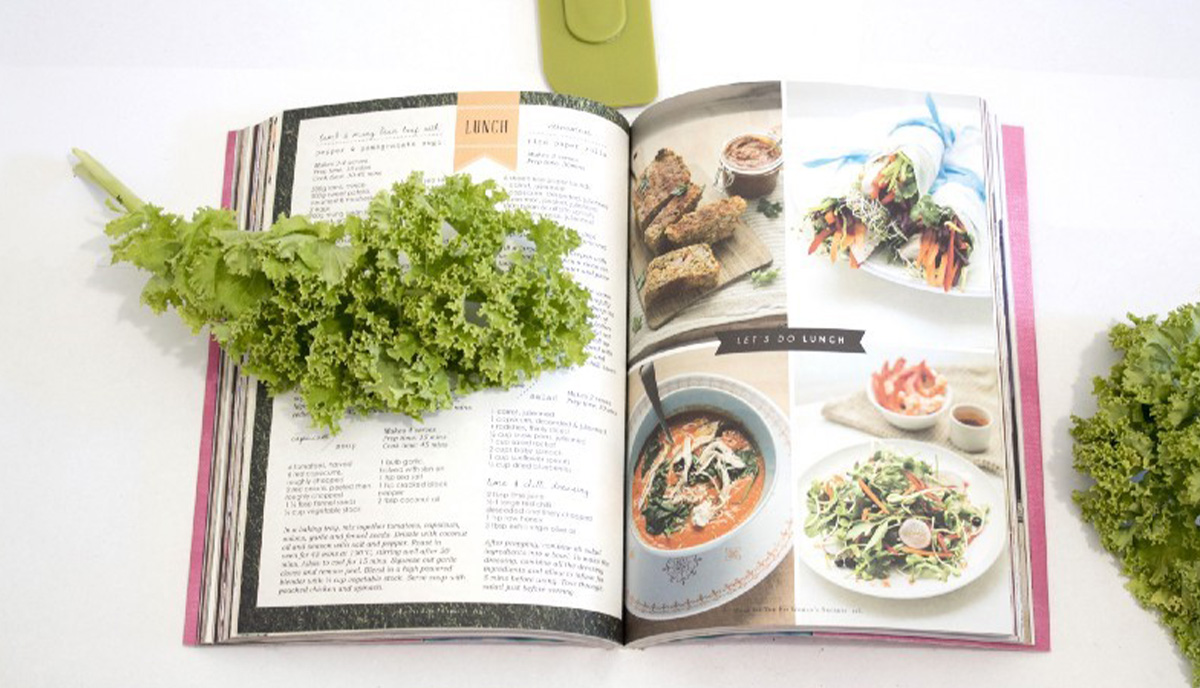
Photo by S O C I A L . C U T on Unsplash
If you love cooking — whether you adapt or invent well-known kitchen classics, stick to a culinary repertoire inherited from your grandmother, or enjoy experimenting with new recipes and flavor combinations — printing a family cookbook can be a fabulous idea. But there’s a lot more to it than just lists of ingredients and instructions on how to put the dishes together. Let’s look at what goes in to making a really great family cookbook that’s as beautiful and inspiring as it is practical and useful.
Why print a family cookbook?
You may want to print your cookbook as a smart and elegant way to preserve your recipes — or your traditional family favorites — for future generations. Perhaps you’d like to print your cookbook to share among friends and colleagues. You may even have ambitions to distribute and sell your cookbook as a commercial enterprise. Everyone has their motives and it’s worth giving some thought to understanding yours because they will have an influence on the kind of cookbook you design, the recipes you include, exactly how you print it, and what happens next.
Fundamentals of printing a great family cookbook
We’ll go into all of this in much more detail in just a moment, but to get you thinking along the right lines, let’s introduce the fundamental ground you’ll need to cover when moving from a collection of recipes — stored in your notebook, on scraps of paper, or in your memory — to a beautifully printed and bound, illustrated edition of your family cookbook.
Within each of these categories are a multitude of options and choices. Your cookbook could be clean and elegant in its Shaker-style simplicity with easy recipes and few illustrations. It could be in a smart, modern style, with stunning photography and bright colors. Perhaps it will be more than just a cookbook, but contain family anecdotes and photographs to add that personal touch. Or anything else your imagination and objectives can conjure to life between its pages!
So, let’s unpack this “shopping list” for a winning cookbook and look more closely at all the possible “ingredients” and how you might put them together to get the desired result.
Choose a theme for your cookbook
Choosing a cohesive theme for your cookbook is a vital aspect which many newbies overlook. But it can honestly be the difference between a success and a failure, regardless of whether you’re printing your recipes for private or commercial reasons. So, what is a cookbook’s theme, why does it matter, and how do you choose one?
A theme is a unifying idea that pulls all your recipes together as whole and gives your cookbook an overall meaning or purpose. For example, if you discovered your recipes in your late grandmother’s cookery notes, this could present you with a number of possible themes:
- The Old Kentucky Kitchen — if your grandmother came from Kentucky and her recipes were rooted in the traditions of the place. This would be a geographical theme.
- William’s Legacy Cookbook — if your grandmother was something of a character, you could theme it around her personality and how that’s reflected in the recipes she loved to make. This would be a personality theme.
- MawMaw’s Cajun Cooking — if your grandmother was from way down south and of old French-Canadian stock, you could focus on the strong Cajun influence in her cuisine. This would be a cultural theme.
Other examples of thematic possibilities could be:
- Healthy cooking for kids — full of cool recipes that make mealtime fun and healthy for the younger members of the family
- Festive dining — special full-menu recipe choices for those special times in the year when the whole family gets together such as Easter, Thanksgiving, Christmas, Halloween, and Anniversaries
- Dad’s diner — a collection of favorite recipes from the man in the house, switching the traditional roles
- Waste not, want not — smart ways to use leftovers and ingredients near the end of their use-by dates to make delicious dishes for the whole family to enjoy
- The vegetarian/vegan family — a cookbook for families with an ethical commitment to a specific diet or lifestyle
- The Educational Kitchen — recipes which can be used to help kids learn about weights and measures, geography, history, and more
- The four seasons — recipes themed around spring, summer, autumn and winter produce
- Sinful sweets — nothing but indulgent desserts
- A Dickensian Family Christmas — festive recipes and menus drawn from food mentioned in Dickens’ classic novels
As you can imagine, there’s no end to the possibilities that could be added to this list. You’ll be able to think of dozens, if not hundreds, more. But choosing a specific theme — and the more specific, the better — will help add atmosphere and sense to the cookbook. A good theme can elevate a book from a mere list of recipes to a life-enriching, entertaining, and nutritious resource to be treasured and used for years to come. It will also help you to organize the content.
Cookbook Content
What should a cookbook include? The content of your family cookbook includes all the text — introduction, anecdotes, descriptions, instructions, recipe lists, and so on — along with all the illustrations and photographs. Exactly what you include in the content will depend on your aims and skills. Whether you write all the text content and take all the photos yourself, or get a professional to do it, will depend on the complexity of the content and the skills and equipment you have. We can divide content into “essential” and “optional” categories. Let’s take a look at the kinds of content you may want to include in your family cookbook.
Cookbook content essentials:
Introduction: Every cookbook should include an introduction which explains the background that inspired the book and why your particular cookbook is different to all the others. This is what marketing people call the “VP” (value proposition) and the “USP” (unique selling point). With so many cookbooks already to choose from, it’s vital that you give your potential buyer a good reason to choose yours. That’s another reason why theme is so important, too. It makes your cookbook stand out from all the others on the bookstore shelves.
Recipes: Clearly, a cookbook must include the recipes! How these are grouped, laid out, and explained is also very important and we’ll look at this in more detail in just a moment.
Ingredients lists: While each recipe will include the necessary ingredients, it’s important to add a separate list so that the reader can quickly understand if they already have everything that’s needed.
Weights and measures: You mustn’t assume that your reader has any experience in the kitchen or with following recipes. So, it’s essential to include an explanation of the weights and measures that you’re using and how to make sure the quantities are correct. You must also be consistent throughout to avoid confusion. Don’t use cups and spoons as measures in one recipe, grams in the next, and then pounds and ounces in the one after that!
Equipment lists: Equipment lists are very important. You can’t assume that your reader has all the same tools and equipment that you have in your kitchen. It’s unwise, for example, to include a recipe for which an expensive piece of electronic equipment — say a juicer, a mixer, or a deep fryer — is essential. Try to keep the equipment as simple as you can, offer alternatives where possible, and make sure you list everything that’s needed upfront. You don’t want your reader to go to the trouble and expense of getting in special ingredients and spending an hour in the kitchen only to find they can’t complete the recipe because they haven’t got a widget. Especially if the guests are due in 15 minutes and the stores are closed!
Preparation time: All good cookbooks include an approximation of how long it should take from tying your apron strings to being ready to plate up. As mileage always varies depending on the kind of cooking facilities, the ambient temperature and humidity, the pace of the cook, errors and the unforeseen, it’s best to give a time range (35 to 40 mins, for example) and make explicit that the timings are meant as approximate guidelines.
Servings: Another crucial element in your content is to specify how many people each recipe will serve. One reader may be cooking only for themselves and will need to know to adjust the quantities down on a recipe designed to fill the hungry tummies of a family of four, or double up for a dinner party with six guests and the hosts seated at table.
Content and index pages: Cookbooks should be easy to use and to look up a recipe. So, always include a clear, well laid out list of contents right at the beginning. You can break it down into subheadings, too. They could be seasonal, based on core ingredients (meat, fish, poultry, game, vegetarian, gluten free), meal types (breakfast, lunch, teatime treats, dinner, supper, desserts) or any other division which makes sense.
An index at the back helps readers find a recipe based on the meal, the season, a key ingredient, a region, or whatever else. Indexing is a specialist business and rather more complex than you might think, so it may be worth engaging the services of a professional indexer, especially if your book includes more than a handful of recipes.
Optional cookbook content:
Head notes: It can prove helpful and also add “flavor” to your recipes if you include a short introductory paragraph which tells a little of the history of the dish, hints and tips, serving suggestions, or other information which doesn’t belong elsewhere.
Anecdotes: A family cookbook is a great opportunity to include funny, wise, or simply evocative anecdotes which can add to the reader’s pleasure while giving both context and a touch of personal flair.
Quotations: A pleasing option, and an alternative to anecdotes, is to add quotations at the beginning of each chapter, or at the foot of every recipe, say. These could be lines from famous poets, wits, or even well-known chefs and other personalities. Obviously, they should be related to the recipes in some way — perhaps seasonal, historical, geographical, or in the case of our Cajun grandmother from earlier, snippets of her pithy sayings or snatches of folk song.
Illustrations: While most contemporary cookbooks use professional, high-definition photography to enhance the visual side, line, watercolor, or digital illustrations — even cartoons — can be a wonderful and surprising enhancement to a family cook book.
Photographs: While we’ve included photography in the optional section — because strictly speaking you can print a viable cookbook without photos — in most cases beautiful photographs are a must. They can be deployed to create atmosphere and show examples of the finished dishes plated up and delicious; or they can be more practical in nature, illustrating the ingredients and measures or steps in the recipe. But unless you have first-class equipment and developed photography skills, you may need to use a professional photographer to style and take the pictures for you.
Symbols and a key: A good cookbook should always be clear, clean, and easy to read and understand. So, you might want to reduce the amount of text by using symbols next to recipes to communicate important information “at a glance”. For example, a leaf could show that it’s vegetarian, a snowflake that it’s a winter recipe, or simply an abbreviation such as “GF” to indicate it’s gluten free. Whatever symbols, figures, and abbreviations you choose, you’ll need to add a key which explains them all.
Cookbook formats, layout, and design
We’ve bundled these three aspects of your family cookbook together under one heading because they’re closely related. Decisions made about one will influence the way you approach the others. But first, let’s tackle them one at a time so we’re clear what we’re talking about.
Cookbook formats and binding styles
Cookbooks come in all manner of different formats and bindings. But it’s important to make the right choice for your book. For example, if it’s a short book of no more than 28 pages and with just a dozen recipes inside, a saddle-stitched booklet might be the best option; for a high-end professional-level family cookbook with hundreds of recipes and lavish, full color photography, a large format, hardcover coffee table book might be better; for an “everyday” family cookbook that you expect to get heavy use — and perhaps with the kids involved, too — might need to be robust, splash-proof, and be laid flat, so a spiral bound book with laminated pages and a waterproof vinyl cover could be the best bet.
Cookbook layouts
Layout depends a lot on the format you’ve chosen for your cookbook. Likewise, if you have a particular layout in mind, it may influence your choice of format. Certain principles will guide your layout in every case, so let’s give those a moment’s attention now.
- White space: Check any of your favorite cookbooks and one thing you’ll notice is the amount of white space left on the pages (excluding full-page photographs). Leaving large margins around your text and plenty of space between different sections and paragraphs makes the book easier to use, easier for the reader’s eyes to scan and pick out the information they need. In short, it’s “easier in the eye” and makes looking at your cookbook a pleasanter experience. As cookbooks are practical tools, it also leaves the option to scribble in the margins for those cooks who like to keep personal notes and variations in that way.
- Bullet points: Including bullet points and numbered lists is a great way to make “at a glance” lists, either of equipment, ingredients, or steps in a recipe.
- Summary boxes: Summary boxes are another cool option for helping readers find the information they need, reminding them of important points, or adding extra information to the main text.
- Color codes: Color is an effective way to help the reader navigate the pages and sections of your cookbook. You can put a colored border on the pages of given sections, for example, add tabs, or use a colored band, headers, and buttons.
- Positioning: Where you position text and other content on the page makes all the difference both to the aesthetic appeal of your family cookbook and the ease of use. It’s often a good idea to choose a positioning scheme for each recipe and stick to it throughout in order to help the reader to familiarize themselves with the book’s layout and make it simpler to navigate.
- Pages and spreads: You might want to use a “one recipe to a page” layout in which all the information for a given recipe — lists, instructions, tips, photos and other content — is homed in a single page. But another popular option is to think of your book’s layout in terms of “spreads” rather than pages. A spread is when you have two open pages facing and visible. One effective way of using spreads, for example, might be to have the text content on the left page of the spread and on the opposite page, a full color photograph of the plated result or a “step-by-step” photo montage.
Cookbook design
Unless you have studied design to a high level and have the appropriate software, you should outsource this work to a third-party professional. An experienced designer will earn their fee not only by creating a beautiful cookbook but also in time saved in preparatory work before going to press. There’s a complex technical side to book design which in most cases is best left to your designer and printer to deal with.
However, it’s worth looking at a few things you may want to consider when working out your design brief. For example, you may want to print your book in black-and-white or in full color. The choice of fonts and sizes for the text will influence your book’s readability but also the layout, number of pages, and other factors which could impact your choice of formats. If you have a website, blog, or cooking-related e-commerce site, you may want to add interactive elements such as QR codes that readers can scan to be taken to your online properties. And then, there’s the question of photography. Let’s look at that next.
Family cookbook photography
While photography may not be necessary for a family cookbook, it’s a fantastic way to enhance its value, show off the recipes to stunning advantage, and also add a visual element to the instructions. But just taking a few snaps in your kitchen with your smartphone probably won’t cut the mustard. Food photography and styling is a specialized skill. Let’s examine some of the most important things to know about this exciting aspect of creating your own family cookbook.
Equipment: To create images which will look good when professionally printed, you’ll need the right equipment. A good quality DSLR is a must. A tripod, reflectors, a couple of filters, lighting equipment, and a backdrop cloth will prove useful.
Lighting: Photography is all about light. Generally, it’s best to use natural light to photograph your plated up dishes and studio lighting for step-by-step instructional shots.
Environment and angles: The food must always be the focus of the picture. So, while it’s fine to have a couple of other objects to “set the scene”, keep them to a minimum. On the plate itself, you need only the food, arranged in such a way as to make everything visible and leaving plenty of empty space so all the elements can be clearly distinguished. Food is usually best lit from the side and slightly above so that the shadows enhance the form.
Choose your background with care. It should reflect the theme of your cookbook. So, you might choose a rustic wooden board and an antique silver spoon on which the food appears served in a varnished earthenware bowl shot in spring light with a few sprigs of herbs and dried flowers to one side; or a slick surface of black marble, side-lit, and the food presented on a square chrome plate; perhaps a checked table cloth provides the background to a plain white platter with a rolled linen napkin to one side. It will depend on your intentions, but you see the point: the “styling” must reflect the theme.
How much food? In most cases, put less food on the plate than you would actually serve at the family table. While a steaming plate chock-full of filling chow might bring a smile to your family’s faces, it can look inelegant in a photograph and make it difficult to separate out the elements of a dish.
Variety is the spice of life! Try to vary the places and contexts in which you photograph your food. Take pictures at different times of day, in different rooms, even outdoors. Every picture should be striking and tell its own “story”.
Once you have your theme, content, format, layout and design figured, you’re close to being ready to go to print. But before you ask your designer to prepare print ready files and request a proof copy from your printer, you may want to add a few special extras to your book. Here are a few to consider:
- A cardboard sleeve with quick-reference laminated recipe guides in the front or back cover
- A conversion chart for your weights and measures
- A marker ribbon (or two) to help the reader keep places and switch easily between, say, the instructions page and the ingredients list
- A foldout calendar to note recipe ideas for special events
- Postcard recipe lists with check boxes for taking to the store
- Several blank pages at the back for the cook to keep their personal notes, variations, and ideas
Those are just a few ideas to get you started thinking about how to enhance your family cookbook to make it a truly unique and helpful tool. You’ll probably think of others, too. Alternatively, you can keep your cookbook sweet and simple. It’s all a matter of taste!
Special hints and tips to make a family cookbook
To round off, here are a few added hints and tips to make sure you don’t miss out anything vital.
- Test your recipes before you write them down!
- List ingredients in the order they’re needed
- Check you haven’t missed anything off the ingredients list because it’s ‘obvious’ — like “a pinch of salt” or “a dash of lemon juice”. It may seem obvious to you, but you never know!
- Decide what you’ll call things and the weights and measures you’ll use, and stick to them throughout. Weights and measures vary around the world. In the US, we most often think in terms of cups, whereas in Britain, they use ounces. And a US tablespoon/teaspoon varies slightly from a British one. In Europe, everything’s in grams! Also, for example, is it an eggplant or an aubergine? And don’t forget that to choose Fahrenheit or Centigrade and alternatives between electricity and gas. Whatever decision you make, stick to it to avoid confusion.
- Use a universal formula for your recipes. Again, in the interests of clarity and continuity, it’s a good idea to develop a formula for your recipes and stick to that, too. For example, always start with a title, then the head notes, followed by the lists, the instructions and method, temperatures and times, then any serving suggestions and extra notes.
Family cookbook printing
We hope that’s a helpful and informative guide to get you started on the road to realizing a beautiful and useful family cookbook. Whether you’re just developing your ideas or you’re nearly ready to go to print, you can always talk to us! We have over 25 years’ professional experience in the industry and we’ve helped countless cooks just like you to bring their recipes to life in the pages of a custom cookbook. We’d be happy to chat through your needs and advise you whenever you’re ready. And we can give you a no-obligation quote for your project and discuss ways to work within your budget without sacrificing quality. What’ve you got cooking? We can’t wait to find out!








